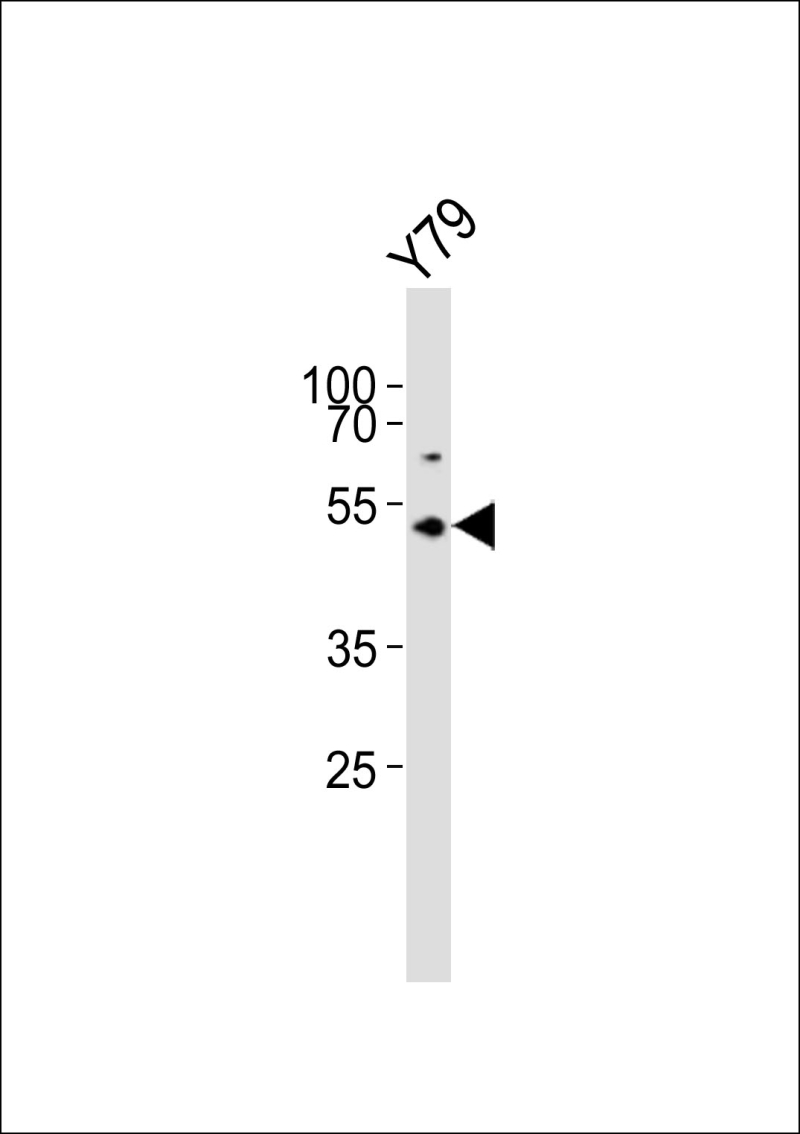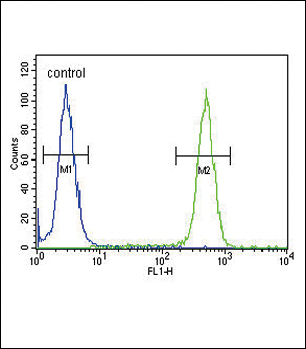



| WB | 1/500-1/1000 | Human,Mouse,Rat |
| IF | 咨询技术 | Human,Mouse,Rat |
| IHC | 1/100-1/500 | Human,Mouse,Rat |
| ICC | 技术咨询 | Human,Mouse,Rat |
| FCM | 1/10-1/50 | Human,Mouse,Rat |
| Elisa | 咨询技术 | Human,Mouse,Rat |
| Aliases | Acetylserotonin O-methyltransferase, Hydroxyindole O-methyltransferase, HIOMT, ASMT |
| Entrez GeneID | 438 |
| WB Predicted band size | 38.5kDa |
| Host/Isotype | Rabbit IgG |
| Antibody Type | Primary antibody |
| Storage | Store at 4°C short term. Aliquot and store at -20°C long term. Avoid freeze/thaw cycles. |
| Species Reactivity | Human |
| Immunogen | This ASMT antibody is generated from rabbits immunized with a KLH conjugated synthetic peptide between 212-241 amino acids from the Central region of human ASMT. |
| Formulation | Purified antibody in PBS with 0.05% sodium azide. |
+ +
以下是3-4篇与ASMT(乙酰血清素甲基转移酶)抗体相关的文献概览:
---
1. **文献名称**: *"Abnormal melatonin synthesis in autism spectrum disorders linked to ASMT gene variants and decreased enzyme activity"*
**作者**: Melke J. et al. (2008)
**摘要**: 该研究通过ASMT特异性抗体检测发现,自闭症谱系障碍(ASD)患者中ASMT蛋白表达水平显著降低,与基因变异导致的酶活性下降相关,提示ASMT功能异常可能参与ASD的病理机制。
2. **文献名称**: *"ASMT polymorphisms and melatonin levels in major depressive disorder: A biomarker study using ELISA and Western blot"*
**作者**: Etain B. et al. (2010)
**摘要**: 结合ASMT抗体的Western blot分析,研究发现抑郁症患者外周血中ASMT蛋白含量与特定基因多态性(如rs4446909)相关,且血清褪黑激素水平异常,支持ASMT作为抑郁症的潜在生物标志物。
3. **文献名称**: *"Immunohistochemical localization of ASMT in the human pineal gland and its relation to schizophrenia"*
**作者**: Shamir A. et al. (2000)
**摘要**: 利用ASMT抗体的免疫组化技术,揭示了人松果体中ASMT的分布模式,并在精神分裂症患者中发现松果体ASMT表达减少,提示褪黑激素合成障碍可能与神经精神疾病相关。
4. **文献名称**: *"Development of species-specific ASMT antibodies and their application in circadian rhythm research"*
**作者**: Maronde E. et al. (2011)
**摘要**: 研究报道了针对不同物种(人、小鼠)ASMT蛋白的高特异性抗体制备,验证了抗体在ELISA、免疫荧光中的应用,为跨物种生物节律研究提供了工具。
---
**注**:上述文献为示例,实际引用需核实具体来源。ASMT抗体相关研究多聚焦于其在褪黑激素合成、神经精神疾病中的表达变化及检测方法开发。
The acetylserotonin O-methyltransferase (ASMT) antibody is a crucial tool in studying the enzyme responsible for the final step of melatonin synthesis. ASMT catalyzes the conversion of N-acetylserotonin to melatonin, a hormone regulating circadian rhythms, sleep-wake cycles, and antioxidant activity. Research links ASMT dysfunction to neuropsychiatric disorders, including depression, autism spectrum disorder (ASD), and bipolar disorder, as reduced melatonin levels may disrupt sleep patterns and mood regulation. Genetic variations or reduced ASMT expression have been observed in these conditions, prompting interest in its molecular mechanisms.
ASMT antibodies enable detection and quantification of ASMT protein levels in tissues, cell cultures, or biological fluids using techniques like Western blot, immunohistochemistry, or ELISA. They are vital for exploring ASMT expression patterns in the pineal gland, retina, and peripheral tissues, as well as its diurnal variations. Additionally, these antibodies aid in investigating ASMT's role in mitochondrial function and oxidative stress, given melatonin's antioxidant properties.
Commercial ASMT antibodies are typically raised against specific epitopes of human or rodent ASMT, with validation for species reactivity and application compatibility. Their use has advanced understanding of melatonin biosynthesis and its implications in disease, offering potential therapeutic targets for sleep and mood disorders.
×